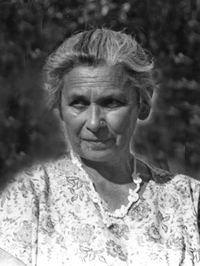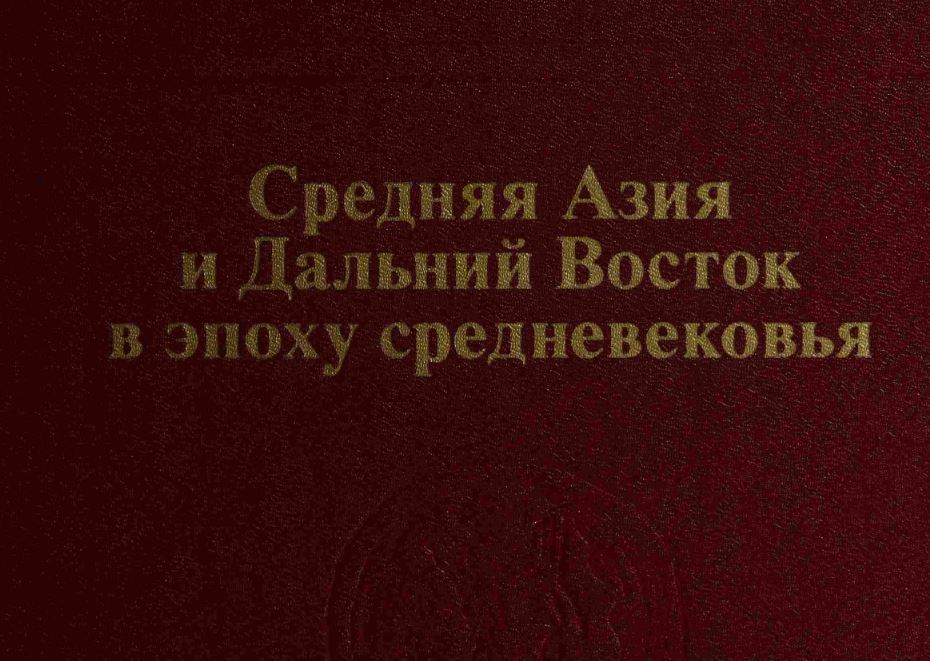Galina Anatolyevna Brykina was born on January 15, 1929 in Yelets, Lipetsk Region, Russia. In 1953, she graduated from the History Department of Moscow State University and in the same year was hired as a senior laboratory assistant at the Institute of Archaeology of the USSR Academy of Sciences, where she worked until the end of her life. In 1954, she was transferred to the position of junior research fellow, and in 1979 – to the position of senior research fellow at the Department of Scythian-Sarmatian Archaeology.

Even in her student years, having joined the expedition of A.N. Bernshtam, G.A. Brykina became interested in archeology. Gaining experience in field research work, in 1950-1952 she took part in the Khorezm archaeological and ethnographic expedition of the Institute of Ethnography of the USSR Academy of Sciences (now the Institute of Ethnology and Anthropology of the Russian Academy of Sciences), headed by S.P. Tolstov. The expedition worked on monuments left by the population of ancient Khorezm in the Aral Sea region.
Already an employee of the Institute of Archaeology of the USSR Academy of Sciences, in 1953-55 she worked as part of the Chui detachment of the Kyrgyz complex archaeological and ethnographic expedition. The detachment, under the leadership of first L.R. Kyzlasov and then Zyablin, conducted research on one of the large settlements of the Chui Valley, Ak-Beshim, where the First and Second Buddhist Temples, a Christian church, a Sogdian castle, etc., which became widely known, were excavated. The work experience gained in these expeditions was invaluable and helped Galina Anatolyevna in her independent work in the future.
In 1957-58 G.A. Brykina participated in the work of the South Kirghiz detachment as part of the Kirghiz archaeological expedition of the Institute of History of the Academy of Sciences of the Kirghiz SSR. During these years, together with Yu.D. Baruzdin, they carried out extensive reconnaissance work in the southwestern part of Kyrgyzstan. In addition to the Kara-Bulak burial ground, the study of which was started by Yu.D. Baruzdin back in 1954, they discovered dozens of new burial grounds, each of which consisted of a large number of burial mounds, from 700 to 1000 burial mounds, and settlements and fortified settlements were identified and recorded.
The results of these works were reflected in the joint monograph of Baruzdin Yu.D. and Brykina G.A. Археологические памятники Баткена и Ляйляка (Юго-Западная Киргизия (Archaeological monuments of Batken and Lyaylyak, Southwestern Kyrgyzstan (Frunze, 1962). This joint work of Yu.D. Baruzdin and G.A. Brykina, where each object, their location is described in detail, the number of burial mounds of such extensive necropolises is precisely calculated, gives a vivid description of the special development of this southern region of Kyrgyzstan in the era of antiquity, the great migration of peoples and the early Middle Ages.
Later, G.A. Brykina continued independent work in this region, leading the Leilek expedition from 1959 to 1987. Her attention was focused on the study of sedentary agricultural settlements. Thus, she completely discovered the small settlement of Maida-Tepe in the Aravan region, including a ceremonial hall, residential and utility buildings, dating back to the 4th-5th centuries.
For a number of years, G.A. Brykina explored the Kara-Bulak settlement in the Leilek district, the results of which, in addition to numerous articles and reports, were the subject of a monograph, Karabulak (Moscow: Nauka, 1974), where she excavated various structures and gave detailed descriptions of them. This book is valuable because it provides a detailed classification of all finds, starting with ceramic vessels, then continuing by item category and material from which they were made, as well as items of decoration and toilet. This classification made it possible to characterize the culture and economic activity of the population of the southwestern foothills of the Fergana Valley, and is also an example of highly professional excavation work and presentation of the materials obtained. In 1969, G.A. Brykina, based on these materials, defended her PhD dissertation on the topic of the Southwestern Foothills of Fergana in the 5th–12th Centuries.
After defending her dissertation, G.A. Brykina continued her work in the Leilek district. G.A. Brykina devoted many years of meticulous work to researching the Kayragach estate and burial ground, the burial mounds in the Tash-Ravat gorge and other monuments of the district, which provided new interesting material on the history and culture of the ancient and medieval population of the region, and sometimes unique materials on their spiritual culture, customs and cults, such as the alabaster idols of the sanctuary of the Kayragach settlement, etc.
G.A. Brykina is the author of numerous scientific works, including three monographs: Archaeological monuments of Batken and Lyaylyak (Southwestern Kyrgyzstan) (1962); Karabulak (1974); Southwestern Fergana in the first half of the 1st millennium AD (1982). The results of G.A. Brykina’s work, especially on the settlements of Kairagach and Karabulak, arouse great interest in the scientific world, which does not fade over time, since they are still rare monuments that so vividly reflect the peculiarities of the worldview of the region’s population and its spiritual culture. In addition to all this, G.A. Brykina, together with N.G. Gorbunova, wrote a large section on Fergana for the collective monograph Central Asia in the Early Middle Ages of the Archaeology of the USSR series (1999). Also G.A. Brykina was the editor of the volume on the Middle Ages of Central Asia and the Far East from the same series Archaeology of the USSR.

Galina Anatolyevna was not only a highly professional specialist who devoted her life to studying the archaeological monuments of the Leilek district, with her scientific works and reports made at numerous scientific conferences and forums, popularizing these amazing monuments of ancient and medieval history and culture of the region not only among archaeologists, but also among a wide range of people. With all this, Galina Anatolyevna was a very modest, gentle person, with the highest human and spiritual qualities. Residents of the Leilek district and all archaeologists from Kyrgyzstan came to her in Moscow and could stay with her. And she showed warm hospitality to everyone, paid attention, sometimes to the detriment of her work and her time. The bright, sunny image of Galina Anatolyevna Brykina – a Person and a Scientist – will live in the memory of everyone who came into contact with her!